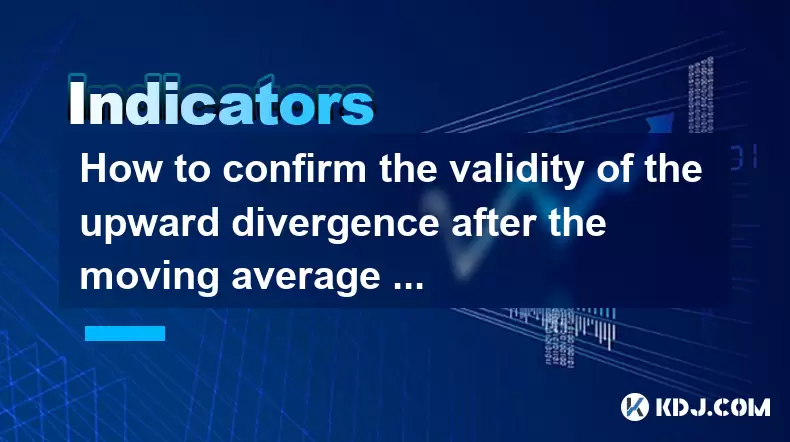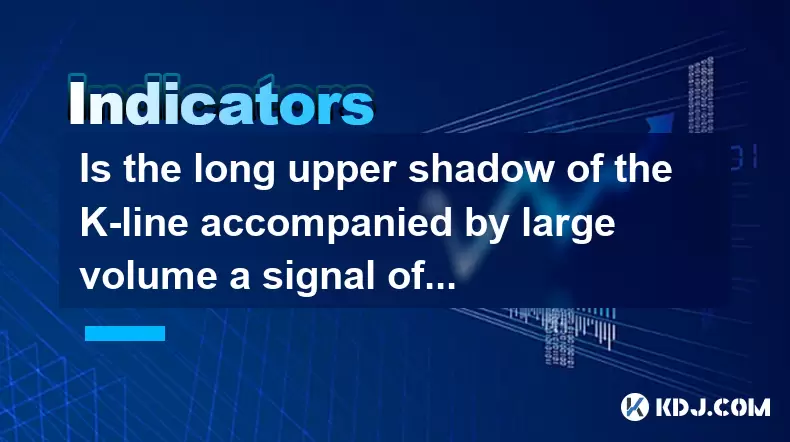-
 Bitcoin
Bitcoin $106,754.6083
1.33% -
 Ethereum
Ethereum $2,625.8249
3.80% -
 Tether USDt
Tether USDt $1.0001
-0.03% -
 XRP
XRP $2.1891
1.67% -
 BNB
BNB $654.5220
0.66% -
 Solana
Solana $156.9428
7.28% -
 USDC
USDC $0.9998
0.00% -
 Dogecoin
Dogecoin $0.1780
1.14% -
 TRON
TRON $0.2706
-0.16% -
 Cardano
Cardano $0.6470
2.77% -
 Hyperliquid
Hyperliquid $44.6467
10.24% -
 Sui
Sui $3.1128
3.86% -
 Bitcoin Cash
Bitcoin Cash $455.7646
3.00% -
 Chainlink
Chainlink $13.6858
4.08% -
 UNUS SED LEO
UNUS SED LEO $9.2682
0.21% -
 Avalanche
Avalanche $19.7433
3.79% -
 Stellar
Stellar $0.2616
1.64% -
 Toncoin
Toncoin $3.0222
2.19% -
 Shiba Inu
Shiba Inu $0.0...01220
1.49% -
 Hedera
Hedera $0.1580
2.75% -
 Litecoin
Litecoin $87.4964
2.29% -
 Polkadot
Polkadot $3.8958
3.05% -
 Ethena USDe
Ethena USDe $1.0000
-0.04% -
 Monero
Monero $317.2263
0.26% -
 Bitget Token
Bitget Token $4.5985
1.68% -
 Dai
Dai $0.9999
0.00% -
 Pepe
Pepe $0.0...01140
2.44% -
 Uniswap
Uniswap $7.6065
5.29% -
 Pi
Pi $0.6042
-2.00% -
 Aave
Aave $289.6343
6.02%
Is the DMA average line difference indicator useful? Can you capture the medium-term trend by combining with MACD?
Combining DMA and MACD helps traders capture medium-term trends in crypto by using DMA for trend identification and MACD for entry/exit signals.
May 31, 2025 at 06:36 am

The DMA (Difference of Moving Averages) average line difference indicator is a popular technical analysis tool within the cryptocurrency trading community. It is designed to help traders identify trends and potential trading opportunities by measuring the difference between two moving averages. The question of whether the DMA indicator is useful and if it can capture medium-term trends when combined with the MACD (Moving Average Convergence Divergence) is one that many traders ponder. Let's delve into the specifics of these indicators and how they can be used together effectively.
Understanding the DMA Indicator
The DMA indicator calculates the difference between a short-term moving average and a long-term moving average. The formula for DMA is typically DMA = MA(Short) - MA(Long), where MA(Short) represents the short-term moving average, and MA(Long) represents the long-term moving average. This difference is then plotted on a chart, and traders can use it to identify trends and potential reversals.
Traders often use the DMA indicator to gauge the momentum of a cryptocurrency. When the DMA line is above zero, it suggests that the short-term moving average is higher than the long-term moving average, indicating a bullish trend. Conversely, when the DMA line is below zero, it indicates a bearish trend. The magnitude of the DMA value can also provide insights into the strength of the trend.
Combining DMA with MACD for Medium-Term Trends
The MACD is another widely used technical indicator that helps traders identify momentum and potential trend changes. The MACD is calculated by subtracting the 26-period exponential moving average (EMA) from the 12-period EMA. A signal line, typically a 9-period EMA of the MACD, is then plotted on the chart to generate trading signals.
To capture medium-term trends, traders can combine the DMA and MACD indicators. The DMA can provide a broader view of the trend, while the MACD can offer more precise entry and exit points. Here's how you can use these indicators together:
- Identify the Trend with DMA: Use the DMA to determine the overall trend of the cryptocurrency. If the DMA line is consistently above zero, it suggests a bullish trend, and if it's below zero, it indicates a bearish trend.
- Confirm with MACD: Once you have identified the trend using the DMA, use the MACD to confirm the trend and look for entry and exit signals. A bullish crossover (when the MACD line crosses above the signal line) can confirm a bullish trend identified by the DMA, and vice versa for bearish trends.
Practical Example of Combining DMA and MACD
Let's walk through a practical example of how you can use the DMA and MACD indicators together to capture a medium-term trend in a cryptocurrency.
Step 1: Set Up the Indicators: Open your trading platform and add both the DMA and MACD indicators to your chart. For the DMA, set the short-term moving average to 10 periods and the long-term moving average to 50 periods. For the MACD, use the default settings of 12, 26, and 9 periods.
Step 2: Analyze the DMA: Look at the DMA line on your chart. If the DMA line is consistently above zero, it indicates a bullish trend. If it's below zero, it suggests a bearish trend. In this example, let's assume the DMA line has been above zero for the past few weeks, indicating a bullish trend.
Step 3: Confirm with MACD: Now, look at the MACD indicator. If the MACD line has recently crossed above the signal line, it confirms the bullish trend identified by the DMA. This crossover can be used as an entry signal for a long position.
Step 4: Monitor and Exit: Keep monitoring both indicators. If the DMA line starts to decline and approaches zero, it may signal a weakening of the bullish trend. Additionally, if the MACD line crosses below the signal line, it can be used as an exit signal to close your long position.
Potential Pitfalls and Considerations
While combining the DMA and MACD indicators can be an effective strategy for capturing medium-term trends, there are some potential pitfalls and considerations to keep in mind.
- False Signals: Both the DMA and MACD can generate false signals, especially in volatile markets. It's crucial to use other technical indicators and fundamental analysis to confirm your trading decisions.
- Lag: Moving averages, which are the basis for both the DMA and MACD, can lag behind the current price action. This lag can result in missed opportunities or late entries and exits.
- Over-reliance: Relying solely on these indicators without considering other factors can lead to poor trading decisions. Always use a combination of technical and fundamental analysis to make informed trading decisions.
Customizing the DMA and MACD for Different Cryptocurrencies
Different cryptocurrencies may require different settings for the DMA and MACD indicators to effectively capture medium-term trends. Here's how you can customize these indicators for different cryptocurrencies:
- Volatility: Highly volatile cryptocurrencies may require shorter periods for the moving averages to capture trends more quickly. For example, you might use a 5-period short-term moving average and a 20-period long-term moving average for the DMA.
- Market Conditions: During bullish market conditions, you might want to use longer periods for the moving averages to filter out short-term noise. In bearish markets, shorter periods might be more effective.
- Trading Style: Your trading style can also influence the settings you use. For example, if you're a more aggressive trader, you might use shorter periods to capture quick trends, while a more conservative trader might use longer periods for more reliable signals.
Implementing the DMA and MACD Strategy in a Trading Platform
To implement the DMA and MACD strategy in a trading platform, follow these steps:
Step 1: Choose Your Platform: Select a trading platform that supports custom indicators and has a user-friendly interface. Popular platforms include TradingView, MetaTrader 4, and Binance.
Step 2: Add the DMA Indicator: Navigate to the indicators section of your platform and add the DMA indicator. Set the short-term moving average to 10 periods and the long-term moving average to 50 periods. Adjust these settings based on the cryptocurrency and market conditions.
Step 3: Add the MACD Indicator: Add the MACD indicator to your chart. Use the default settings of 12, 26, and 9 periods, or customize them based on your trading strategy.
Step 4: Analyze the Chart: Look at the DMA line to determine the overall trend. If it's above zero, it's bullish; if it's below zero, it's bearish. Use the MACD to confirm the trend and look for entry and exit signals.
Step 5: Execute Trades: Based on the signals from the DMA and MACD, execute your trades. For example, if the DMA is bullish and the MACD confirms a bullish crossover, you might enter a long position. Monitor the indicators to determine when to exit the trade.
Frequently Asked Questions
Q1: Can the DMA indicator be used for short-term trading?
While the DMA indicator is typically used for identifying medium-term trends, it can be adapted for short-term trading by using shorter periods for the moving averages. For example, you might use a 5-period short-term moving average and a 20-period long-term moving average to capture shorter trends. However, keep in mind that shorter periods can result in more false signals, so it's important to use other indicators and analysis to confirm your trades.
Q2: How often should I check the DMA and MACD indicators?
The frequency with which you check the DMA and MACD indicators depends on your trading style and the time frame you're trading. For medium-term trends, you might check the indicators daily or weekly. If you're using these indicators for shorter time frames, you might need to check them more frequently, such as every few hours. Always ensure that you're using the indicators in conjunction with other analysis to make informed trading decisions.
Q3: Are there any other indicators that can be used effectively with the DMA and MACD?
Yes, there are several other indicators that can be used effectively with the DMA and MACD to enhance your trading strategy. The Relative Strength Index (RSI) can help confirm overbought or oversold conditions, while the Bollinger Bands can provide insights into volatility and potential breakouts. Additionally, the Stochastic Oscillator can be used to identify potential reversals. Combining multiple indicators can help you make more informed trading decisions.
Q4: Can the DMA and MACD indicators be used for all cryptocurrencies?
While the DMA and MACD indicators can be used for most cryptocurrencies, their effectiveness may vary depending on the specific cryptocurrency and market conditions. Highly volatile cryptocurrencies may require more frequent adjustments to the indicator settings, while less volatile cryptocurrencies might work well with standard settings. Always test your strategy on historical data for the specific cryptocurrency you're trading to ensure its effectiveness.
Disclaimer:info@kdj.com
The information provided is not trading advice. kdj.com does not assume any responsibility for any investments made based on the information provided in this article. Cryptocurrencies are highly volatile and it is highly recommended that you invest with caution after thorough research!
If you believe that the content used on this website infringes your copyright, please contact us immediately (info@kdj.com) and we will delete it promptly.
- Ruvi AI: The Audited Token Primed for a Bull Run?
- 2025-06-21 06:25:12
- Cryptos, Social Media, and Trending Topics: What's Hot Right Now?
- 2025-06-21 06:45:11
- Crypto Price Predictions: Will HBAR and VELO Bounce Back?
- 2025-06-21 06:45:11
- Pi Coin: Decoding the Price and Future Trajectory in 2025
- 2025-06-21 07:05:11
- Arctic Pablo: The Meme Coin Primed to Pop?
- 2025-06-21 06:25:12
- Coin Master Free Spins: Your Daily Dose of Links (June 2025)
- 2025-06-21 07:07:13
Related knowledge

Does the sudden contraction of ATR indicate the end of the trend?
Jun 20,2025 at 11:14pm
Understanding ATR and Its Role in Technical AnalysisThe Average True Range (ATR) is a technical indicator used to measure market volatility. Developed by J. Welles Wilder, ATR calculates the average range of price movement over a specified period, typically 14 periods. It does not indicate direction—only volatility. Traders use ATR to gauge how much an ...

Is the trend continuation when the Williams indicator is oversold but there is no rebound?
Jun 20,2025 at 11:42pm
Understanding the Williams %R IndicatorThe Williams %R indicator, also known as the Williams Percent Range, is a momentum oscillator used in technical analysis to identify overbought and oversold levels in price movements. It typically ranges from 0 to -100, where values above -20 are considered overbought and values below -80 are considered oversold. T...

Is the golden cross of the ROC indicator below the zero axis effective?
Jun 20,2025 at 09:42pm
Understanding the ROC Indicator and Its Role in Cryptocurrency TradingThe Rate of Change (ROC) indicator is a momentum oscillator widely used by traders to assess the speed at which cryptocurrency prices are changing. It measures the percentage difference between the current price and the price from a certain number of periods ago. The ROC helps identif...

How to confirm the validity of the upward divergence after the moving average sticks together?
Jun 21,2025 at 01:36am
Understanding the Basics of Moving Averages and DivergenceIn technical analysis, moving averages are crucial tools used to smooth out price data over a specified time period. When multiple moving averages converge or 'stick together,' it often indicates a consolidation phase in the market. This phenomenon can be a precursor to significant price movement...

What should I do if the KD indicator crosses in the oversold zone but the rebound is weak?
Jun 21,2025 at 07:07am
Understanding the KD Indicator and Its Role in Crypto TradingThe KD indicator, also known as the stochastic oscillator, is a momentum-based technical analysis tool commonly used in cryptocurrency trading. It consists of two lines — the %K line and the %D line — that fluctuate between 0 and 100. The primary function of this indicator is to identify overb...

Is the long upper shadow of the K-line accompanied by large volume a signal of peaking?
Jun 21,2025 at 12:28am
Understanding the Long Upper Shadow K-LineThe long upper shadow of a K-line is a common candlestick pattern that often appears during price action analysis. It consists of a small real body with a long upper wick, indicating that the price rose significantly during the period but was ultimately rejected and closed lower than its high. This pattern can s...

Does the sudden contraction of ATR indicate the end of the trend?
Jun 20,2025 at 11:14pm
Understanding ATR and Its Role in Technical AnalysisThe Average True Range (ATR) is a technical indicator used to measure market volatility. Developed by J. Welles Wilder, ATR calculates the average range of price movement over a specified period, typically 14 periods. It does not indicate direction—only volatility. Traders use ATR to gauge how much an ...

Is the trend continuation when the Williams indicator is oversold but there is no rebound?
Jun 20,2025 at 11:42pm
Understanding the Williams %R IndicatorThe Williams %R indicator, also known as the Williams Percent Range, is a momentum oscillator used in technical analysis to identify overbought and oversold levels in price movements. It typically ranges from 0 to -100, where values above -20 are considered overbought and values below -80 are considered oversold. T...

Is the golden cross of the ROC indicator below the zero axis effective?
Jun 20,2025 at 09:42pm
Understanding the ROC Indicator and Its Role in Cryptocurrency TradingThe Rate of Change (ROC) indicator is a momentum oscillator widely used by traders to assess the speed at which cryptocurrency prices are changing. It measures the percentage difference between the current price and the price from a certain number of periods ago. The ROC helps identif...

How to confirm the validity of the upward divergence after the moving average sticks together?
Jun 21,2025 at 01:36am
Understanding the Basics of Moving Averages and DivergenceIn technical analysis, moving averages are crucial tools used to smooth out price data over a specified time period. When multiple moving averages converge or 'stick together,' it often indicates a consolidation phase in the market. This phenomenon can be a precursor to significant price movement...

What should I do if the KD indicator crosses in the oversold zone but the rebound is weak?
Jun 21,2025 at 07:07am
Understanding the KD Indicator and Its Role in Crypto TradingThe KD indicator, also known as the stochastic oscillator, is a momentum-based technical analysis tool commonly used in cryptocurrency trading. It consists of two lines — the %K line and the %D line — that fluctuate between 0 and 100. The primary function of this indicator is to identify overb...

Is the long upper shadow of the K-line accompanied by large volume a signal of peaking?
Jun 21,2025 at 12:28am
Understanding the Long Upper Shadow K-LineThe long upper shadow of a K-line is a common candlestick pattern that often appears during price action analysis. It consists of a small real body with a long upper wick, indicating that the price rose significantly during the period but was ultimately rejected and closed lower than its high. This pattern can s...
See all articles

























































































